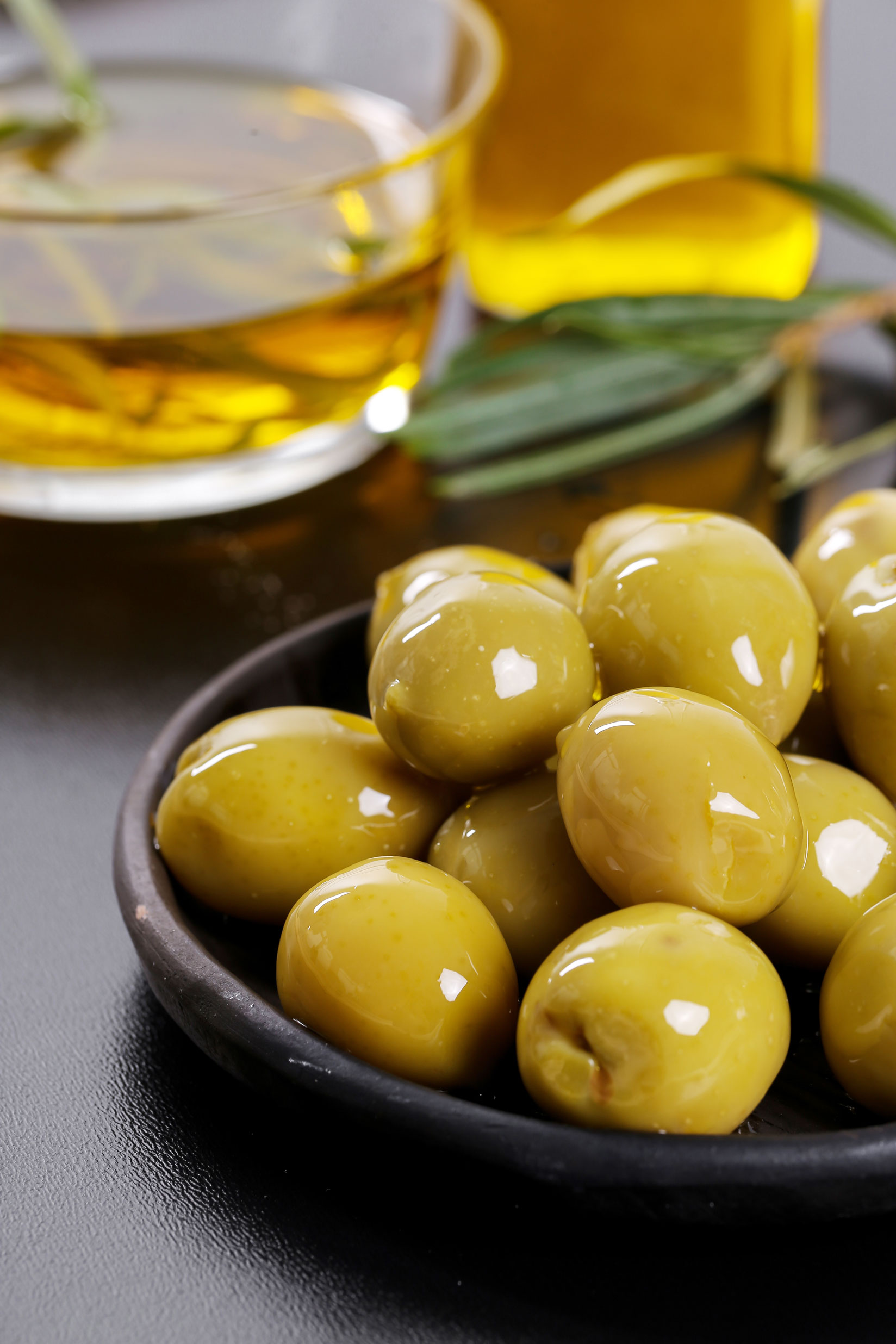Olives have been cultivated for thousands of years. They are highly regarded for their unique flavor and numerous health benefits, including improved digestion, strengthened immune system, and reduced risk of chronic diseases, such as heart disease and cancer. Olives are a rich source of monounsaturated fats, which promote heart health by lowering bad cholesterol levels and increasing good cholesterol levels. Olives are also packed with antioxidants, such as vitamin E and polyphenols, which help protect the body against oxidative stress and inflammation. Additionally, olives contain valuable minerals like iron, calcium, and copper, as well as vitamin A and vitamin K. Whether enjoyed as a snack or your charcuteries, incorporated into salads, or used as a topping for pizzas and pasta, olives add a burst of flavor and provide a range of nutritional advantages.
These fruits come in various colors, including green, black, and purple, and are commonly used in cooking, particularly in Mediterranean cuisine, mostly from Spain, Greece, and Italy.
Olives & Pickels

Spanish Olives Types
Spanish olives are renowned for their exceptional quality and diverse flavors. The standard preparation method is traditional brine-curing, where olives are soaked in a saltwater solution to reduce bitterness and enhance the taste. The olives undergo fermentation in the brine for several weeks or months, absorbing flavors and developing their unique characteristics. Popular Spanish olive varieties include Manzanilla, Gordal, Hojiblanca, Arbequina, Picual, and Cornicabra. Spanish olive oils, such as those made from Picual olives, are highly regarded for their intense flavor and quality.
Overall, Spanish olives are known for their exceptional taste, versatility, and meticulous care in their preparation. They play a significant role in Spanish culinary culture, adding rich flavors and textures to various dishes.
- MANZANILLA: Manzanilla olives are one of Spain’s most widely recognized and consumed olive varieties. They have a round shape, firm texture, and a slightly nutty buttery flavor.
- GORDAL: Gordal olives are one of the most delicious large-sized olives with a crisp and meaty texture. They are typically harvested when green and undergo brine-curing.
- PELOTIN: Table olive with small size, Intense green color, and delicate texture. These are the Gordal varieties harvested by hand in their early stages. Attracting by its tiny size is a top product with great acceptance internationally.
Greek Olives Types
Greek olives are highly esteemed for their superior taste and are a staple in Mediterranean cuisine. The common preparation method for Greek olives is brine-curing, similar to the process used in Spain. The olives are soaked in a saltwater brine to reduce bitterness and enhance flavor. This traditional method involves changing the brine periodically over several weeks or months. Greek olives, including Kalamata, Amfissa, Thassos, and Halkidiki, come in various varieties.
Greek olives are widely used in Greek salads and mezze platters and as a flavorful ingredient in many Greek dishes.
- KALAMATA: Kalamata olives are perhaps the most famous Greek olive variety. They have a deep purple color, a meaty texture, and a rich, fruity flavor. Kalamata olives are often brine-cured with vinegar and are widely used in Greek cuisine and salads.
- Halkidiki: Halkidiki olives are large-sized olives with a firm and crunchy texture. They are harvested when green and often served as stuffed olives with various fillings, such as cheese, almonds, or peppers. Halkidiki olives are primarily grown in the Halkidiki region of northern Greece.

